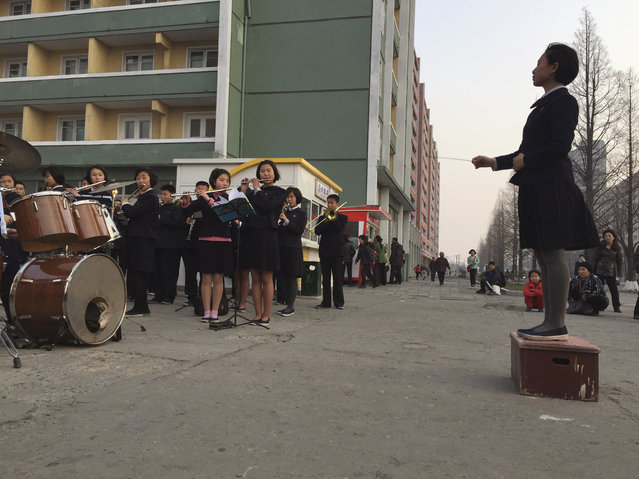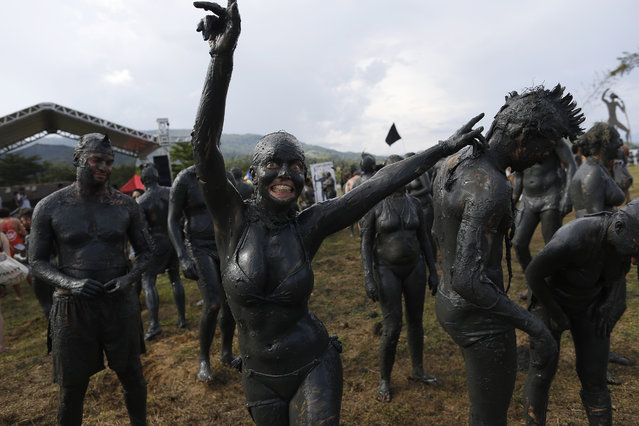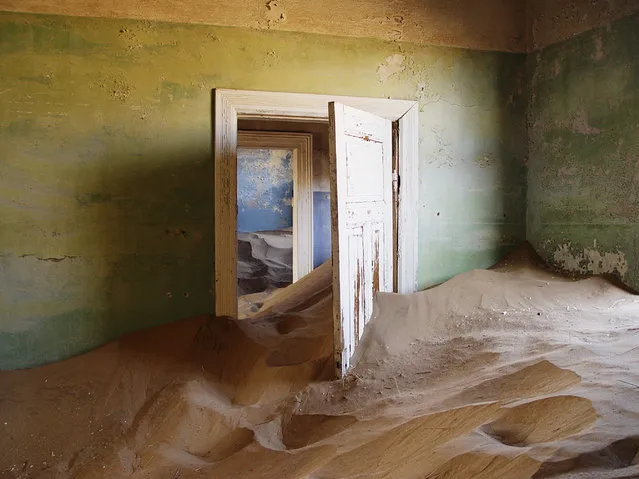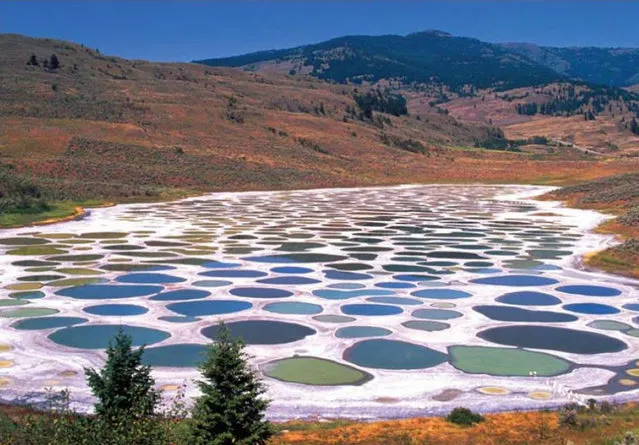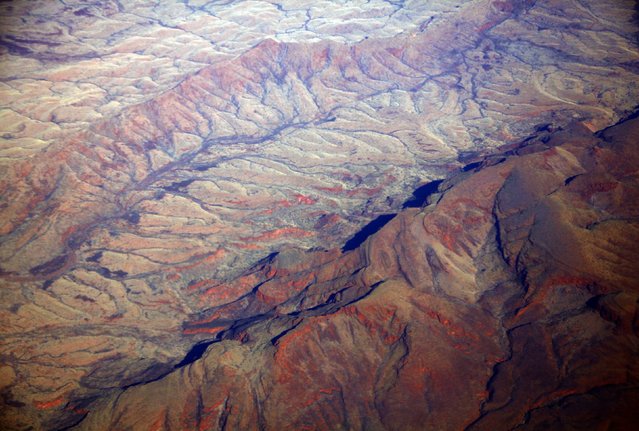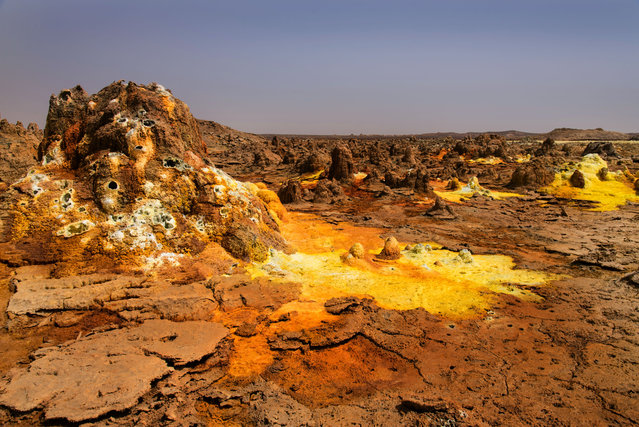
Thanks to plenty of salt minerals and heavy elements in the soil, the Dallol volcano in Ethiopia produces brilliantly colored pools of water at the top of its caldera. And, as if to add greater effect to the already stunning sights, the volcano stands apart from the salt plains around it like an island. This hotspot was created through phreatomagmatic eruptions caused by magma interacting with water, and was further altered due to the presence of salt water. (Photo by Francisco Pandolfo/Caters News)
10 Feb 2016 11:36:00,post received
0 comments

